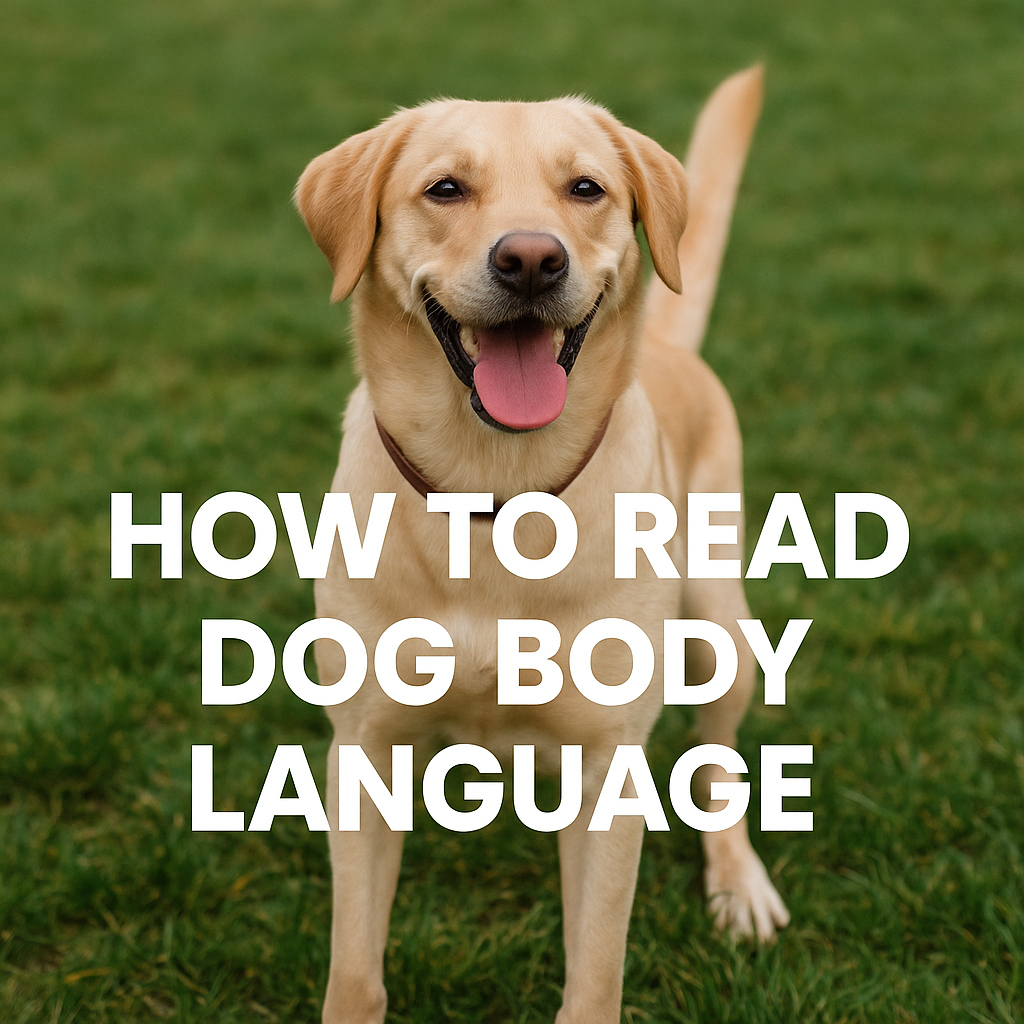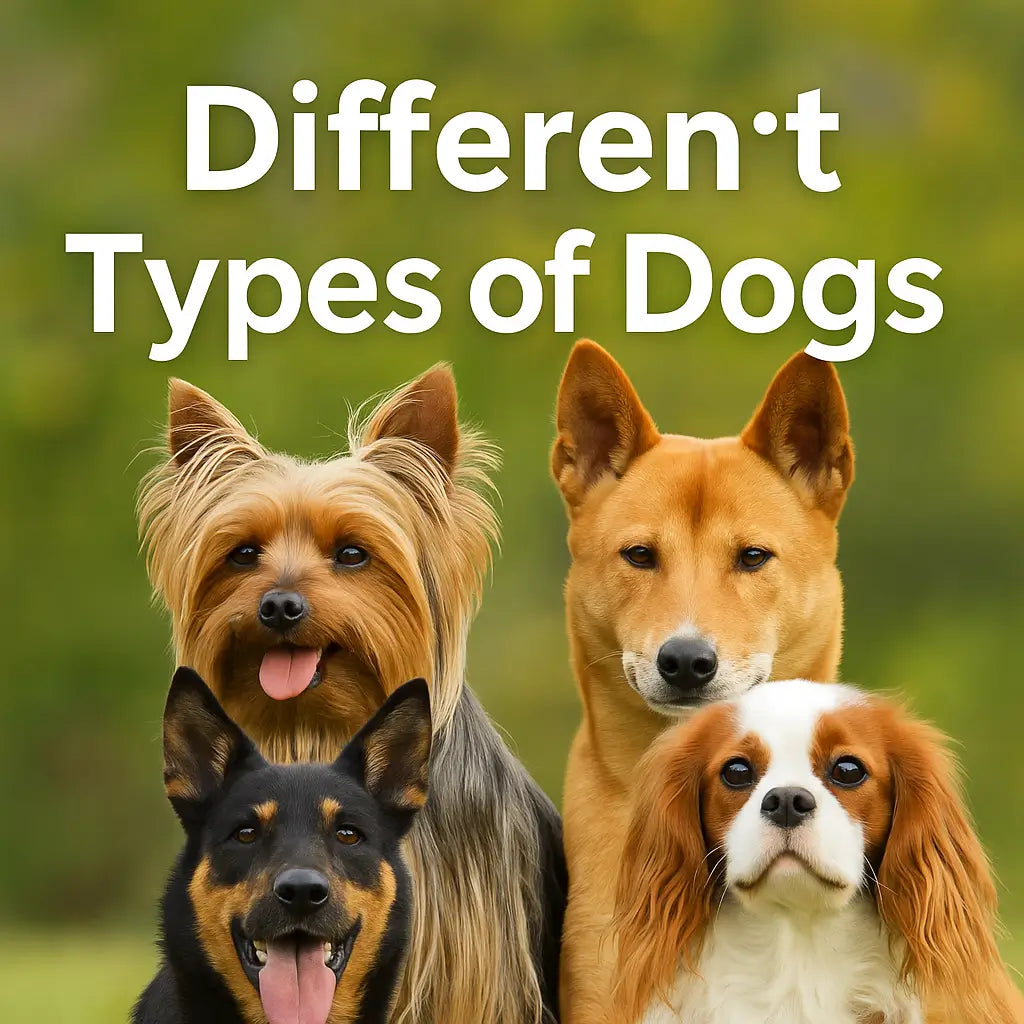Dogs express themselves through nonverbal communication every day. Dogs use their ears and tails and eyes and body position to communicate their emotions to us. The ability to recognize these signals brings both fascination and essential value for protecting dogs and their well-being. The guide teaches you to identify calming body language in dogs while explaining the true meaning of a wagging tail and how to recognize signs of dog anxiety and feeling trapped.
What Is Dog Body Language?
Dogs use body language to express their emotions through their postures and facial expressions and physical movements since they do not possess verbal communication abilities. Dogs communicate through body language signals which include ear positions and tail heights and mouth tightness since they do not use spoken words like humans do.
A wagging tail does not automatically indicate a dog is feeling happy. The speed and height of a wagging tail together with the overall body position of the dog determine whether it shows stress or alertness or aggressive behavior. Observing the entire dog body becomes essential because all parts including ears eyes mouth legs and weight distribution contribute to their communication.
Deciphering Dog Body Language
Dogs rely on body language to share their emotional state. By learning to decode these signals, you can better understand what your dog is trying to say in a given situation. Below are the most common states you’ll see, with insights into what each one means.
Relaxed Dog Body Language
A relaxed dog is easy to spot. Look for soft eyes that blink slowly, a slightly open mouth that almost looks like a smile, and floppy ears in a neutral position. The body is loose, not stiff, and the dog’s tail hangs naturally in a neutral position. A relaxed dog may even roll over for a belly rub, showing trust.
This is when your dog feels safe and calm. If you approach, the dog may wag its tail gently and keep soft eye contact. Recognizing a relaxed dog helps you know when your pet is open to play, training, or quiet companionship.
Alert Dog Body Language
An alert dog has noticed something new—a sound, movement, or scent. The body becomes upright, with weight leaning forward. Ears perk up, the mouth closes tightly, and the tail often lifts high. The dog’s eyes focus sharply on the object of interest.
This doesn’t mean aggression, but it shows heightened awareness. Many confident dogs show this posture when meeting other animals or hearing a knock at the door.
Stressed or Nervous Dog Body Language
An anxious dog often shows calming signals or displacement behaviors. You may see yawning when the dog isn’t tired, lip smacking, or a shake-off like after a bath. The tail might tuck low, the ears pin back, and the eyes may show the whites—often called “whale eye.”
According to Purdue University, these signals mean the dog is trying to avoid conflict and calm itself. In tense situations, a stressed dog may also lift a front paw or shift its weight away. Recognizing these cues early lets you step back, give space, and prevent the dog from feeling cornered.
Fearful Dog Body Language
A fearful dog shrinks into itself. You’ll notice a crouched body, tail tucked tightly under the rear end, ears flattened back, and trembling. The dog may avoid eye contact and lean away, sometimes growling if it feels trapped.
The ASPCA warns that fearful dogs may escalate to aggression if they feel a perceived threat and cannot escape. A fearful dog is not “bad”—it’s scared. The best response is to reduce pressure, move slowly, and let the dog retreat to a safe place.
Appeasement Dog Body Language
Appeasement signals show a dog is trying to avoid conflict. Common signs include lowering the body, averting the gaze, slow tail wagging, or even licking at the air or another dog’s mouth. These gestures mean, “I don’t want trouble.”
The AKC and Purdue both note that appeasement is part of canine communication used to calm tense situations. When you see these signs, back off and give reassurance rather than pushing closer.
Aggressive Dog Body Language
Aggressive body language is a clear red flag. The dog may freeze, stare hard, raise hackles, and show front teeth with lips pulled back. The mouth is tightly closed before a growl, and the body posture becomes stiff with weight forward.
The American Veterinary Medical Association explains that recognizing these signals and stepping away prevents many bites. Never punish a growl—it is valuable warning communication. Instead, remove the dog from the trigger and work with a professional if needed.
Happy Dog Body Language
A happy dog shows loose wiggles, a gentle wagging tail, floppy ears, and a playful “play bow” with the front legs stretched forward and rear end high. The eyes are soft, and the mouth may be slightly open like a grin.
This state signals joy, excitement, and readiness to engage. Happy dogs invite play with other dogs or people and may even bounce around. This is the best time to reward, play, or share positive experiences with your dog.
Sad Dog Body Language
A sad dog looks withdrawn. Signs include low energy, floppy ears pulled back, little tail movement, or avoiding play and eye contact. Some dogs may lie away from the family or refuse treats.
Cornell University notes that sudden sadness or withdrawal can also signal pain or health problems. If your dog’s behaviour changes, a vet check is always wise.
Room-by-Room: Read Signals Where You Live
Dogs communicate differently depending on the setting. Learning to read canine body language in daily spaces helps you prevent problems and protect dog welfare.
Living Room & Couch
A relaxed dog may sprawl with soft eyes and a slightly open mouth, ready for a belly rub. But if the dog curls tightly, avoids eye contact, or shows whale eye, it’s asking for space. Give a neutral position dog bed nearby so the dog feels safe.
Kids’ Play Area
Anxious dogs often lick lips, tuck their tail, or show displacement behaviors when kids run around. Since children are at higher risk of dog bites, supervision is key. Teaching children to ask before petting reduces conflict.
Front Door & Guests
Alert dog signals—ears up, mouth tightly closed, tail high—are common when visitors arrive. If the dog feels cornered, raised hackles or stiff posture may follow. Use gates or leashes, and reward calm behaviour.
Kitchen & Food
A dog guarding food may freeze, lower its head, and show front teeth. Never reach into a bowl. Instead, teach trading games and provide feeding zones away from other animals.
Backyard & Meeting Other Dogs
When meeting other dogs, watch for stiff legs, tail high, and hard eye contact. This may signal aggression or anxiety. Reset with parallel walks and allow slow sniffing introductions.
Car Rides & Travel
An anxious dog in the car may pant, drool, or pace. These are calming signals of stress. Secure the dog in a dog car seat or harness and build short, positive trips.
Body Language Myths to Skip
Some myths about dog body language put people at risk.
-
“Wagging tail means happy.” A wagging tail can also signal stress, fear, or even aggressive behaviour. You must read the whole dog, not just the tail.
-
“Dominance training works best.” Outdated methods like alpha rolls can increase fear and aggression. Experts in veterinary behaviour reject dominance as the main cause of aggression.
-
“Growling means bad dog.” Growling is a form of canine communication. It warns of a perceived threat and helps avoid conflict. Punishing a growl removes a safety signal.
By avoiding these myths, owners can respond based on science and empathy rather than punishment. This approach supports both safety and dog welfare.
Teach Kids a Simple 3-Step Rule
Children must learn safe ways to interact with dogs. Simple rules save lives and prevent bites.
-
Ask the owner first. Kids should never rush in to pet without permission.
-
Let the dog sniff. Dogs communicate by smell and need time to decide if they feel comfortable.
-
Pet gently on side or chest. Avoid hugging faces, pulling ears, or patting the top of the head.
The CDC highlights that most bites happen with familiar dogs, often when children misunderstand body signals. The AVMA also offers prevention brochures for families. Teaching respect for calming signals like lip smacking or tail tucked helps kids avoid conflict and respect the dog’s emotional state.
Pain Can Change Body Language
Sometimes a dog is not being “stubborn” or “grumpy”—it’s hurting. Pain often changes a dog’s behavior and emotional state.
Signs of pain include a tense mouth, stiff body posture, avoidance of touch, or sudden aggression. A dog may also self-groom excessively, limp, or refuse stairs. These changes can be mistaken for aggressive body language, but they are really distress signals.
Cornell University notes that recognizing pain-related changes is crucial for welfare. If your dog’s body suddenly shifts from relaxed to fearful dog behaviour, call your veterinarian. Treating pain restores normal canine communication and reduces conflict.
When to Call a Pro
Sometimes deciphering dog body language is not enough. If your dog shows repeated aggressive behaviour, frequent fearful dog signs, or sudden changes in body posture, professional help is best.
-
Veterinary behaviorists (ACVB) are veterinarians with advanced training in canine communication and behaviour science (ACVB Search).
-
Certified trainers and consultants (IAABC) can design step-by-step plans for anxious dogs, aggressive dogs, or complex issues.
Seeking help is not failure—it shows commitment to your dog’s welfare. Early support prevents escalation and improves safety for other dogs, other animals, and people in the home.
Dog Body Language Cheat Sheet
Keep a cheat sheet handy to read your dog’s emotional state at a glance:
-
Green Zone (Relaxed Dog / Happy Dog): soft eyes, floppy ears, slightly open mouth, play bow.
-
Yellow Zone (Anxious Dogs / Fearful Dog): tail tucked, lip smacking, whale eye, front paw lifted.
-
Red Zone (Aggressive Dog): raised hackles, hard eye contact, teeth bared, stiff legs.
Visual guides from the AKC and Purdue help reinforce these cues. By watching the whole dog, you can prevent tense situations and support dog welfare.
FAQs
How do dogs say “I love you”?
Dogs communicate affection with soft eyes, relaxed body posture, leaning against you, or bringing toys. A gentle wagging tail and calm eye contact also signal bonding. These calming signals show the dog feels safe.
How long does 1 hour feel to a dog?
Dogs do not tell time like humans, but studies suggest they sense duration through body rhythms and environmental cues. An hour may feel longer to anxious dogs left alone, leading to pacing or self grooming.
How to understand dog body language?
Deciphering dog body language means looking at the whole dog—ears, tail, eyes, mouth, and weight shifts. A wagging tail alone is not enough. Check calming signals, facial expressions, and body posture in context.
How do you say “I’m sorry” in dog language?
To apologize, avoid eye contact, soften your voice, and use calm body posture. Offer a belly rub if the dog approaches willingly. Dogs rely on calming signals, so slowing down and giving space helps them feel safe after tense situations.
Conclusion
The ability to read dog body language enables people to create safer environments while making their pets happier and improving their ability to understand canine signals. Every canine signal communicates meaning through physical expressions which include relaxed ears and playful body positions and defensive hackles and stiffened jaws. Observing your dog's emotional state while honoring their calming signals will create trust between you and your dog while preventing conflicts and enhancing their well-being.












